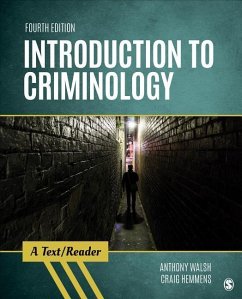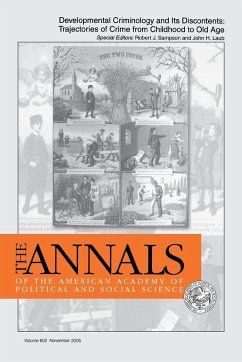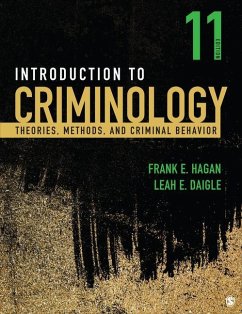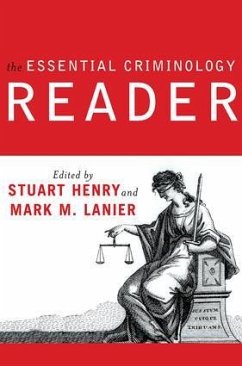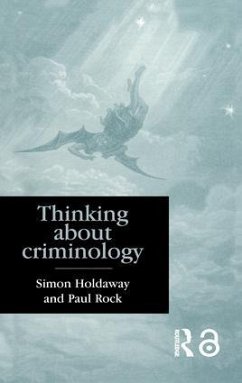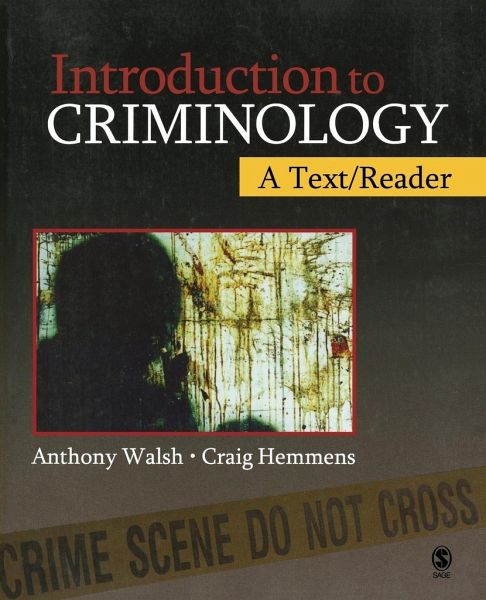
Introduction to Criminology
A Text/Reader
Versandkostenfrei!
Nicht lieferbar
Course Cartridges Course cartridges offer you provide you with flexible, editable content in formats that import easily into most major learning management systems. This course cartridge includes all the assets found on this Instructor Teaching Site and relevant links from the Student Study Site in and easy to upload package. Combining the didactic approach of a textbook with well-edited critical research articles, Introduction to Criminology provides the best of both worlds, offering a unique new spin on the core textbook format. Organized like a more traditional introductory criminology text...
Course Cartridges Course cartridges offer you provide you with flexible, editable content in formats that import easily into most major learning management systems. This course cartridge includes all the assets found on this Instructor Teaching Site and relevant links from the Student Study Site in and easy to upload package. Combining the didactic approach of a textbook with well-edited critical research articles, Introduction to Criminology provides the best of both worlds, offering a unique new spin on the core textbook format. Organized like a more traditional introductory criminology text, this Text/Reader is divided into 14 sections that contain all the usual topics taught in an introduction to criminology course. After a comprehensive overview, each section has an introductory "mini-chapter" that provides engaging coverage of key concepts, developments, controversial issues, and research in the field. These authored introductions are followed by carefully selected and edited original research articles. The readings were written by criminology experts and often have a policy orientation that will help address student interest in the "so what?" application of theory. Key Features and Benefits Features the unique "How to Read a Research Article"-tied to the first reading in the book-to guide students in understanding and learning from the edited articles that appear throughout the text Boasts extensive and innovative coverage of the field of criminology, with special emphasis on the modern psychosocial and biosocial theories and concepts and integrating them with traditional sociological theories Utilizes unique summary tables at the ends of all theory chapters to allow students to quickly observe differences and similarities between competing theories Concludes all theory chapters with a distinctive section that presents policy and prevention implications to describe how the theories can be applied to social and criminal justice policies Covers a wide variety of crime typologies, including serial killing, terrorism, substance abuse, white-collar crime, and organized crime-topics of particular interest to students Provides an introduction to each reading to give students an overview of the purpose, main points, and conclusions of each article, and evaluates their policy implications Offers a clear and concise summary of key terms and concepts in each section coupled with discussion questions that enhance student comprehension of both the authored text and the readings Ancillaries Instructor Resources on CD include computerized testing, PowerPoint slides, teaching activities, and more. Contact Customer Care at 1-800-818-7243 (6 a.m. - 5 p.m., PT) to request a copy. A robust Student study site at www.sagepub.com/walshstudy/ features additional readings, self-quizzes, e-flashcards, links to audio and video archives of NPR and Frontline, and Web exercises. Intended Audience This unique text/reader is designed for students enrolled in Introduction to Criminology courses. Interested in a text/ reader for another criminology or criminal justice here? Explore other titles in the series.




